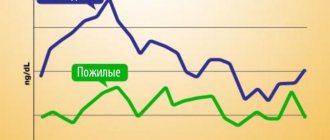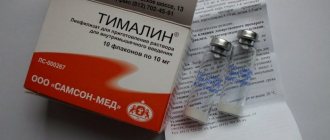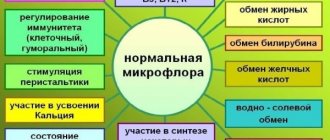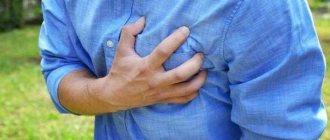Has restrictions during pregnancy
Prohibited during breastfeeding
Prohibited for children
Has restrictions for older people
Has limitations for liver problems
Has limitations for kidney problems
Gabapentin is a potent anticonvulsant drug with a pronounced analgesic effect. This is one of the most frequently prescribed drugs in this group, however, it is necessary to take Gabapentin strictly following the instructions for use, since withdrawal syndrome and addiction to the drug may develop if the dosage regimen and frequency of use of the drug are not followed.
Principle of action, effect of gabapentin
Gabapentin belongs to the group of anticonvulsants. The narcotic effect of gabapentin is based on the fact that it disinhibits the pleasure centers. When consumed in certain doses, it gives relaxation, complacency, joy, a surge of positive emotions, and euphoria. At large doses, hallucinations occur. Tolerance to the drug occurs very quickly and an increase in dose is required. With prolonged use, tachycardia and attacks of excitement occur.
Pharmacokinetics in special clinical situations
Plasma clearance of gabapentin is reduced in the elderly and patients with impaired renal function. The elimination rate constant, plasma clearance and renal clearance are directly proportional to QC. Gabapentin is removed from plasma during hemodialysis. In patients with impaired renal function and patients receiving hemodialysis treatment, dose adjustment is recommended.
Gabapentin plasma concentrations in children aged 4 to 12 years have been found to be generally similar to those in adults.
Who uses gabapentin most often and why?
Gabapentin addiction is part of the phenomenon known as pharmacy addiction. Very young people, teenagers and even children often become drug addicts. Some pharmacies sell prescription drugs to drug addicts, sometimes with the permission of management, sometimes by the personal decision of the pharmacist. The problem of pharmacy drug addiction is exacerbated by the fact that addicts consider the drugs to be much less dangerous than illicit drugs. In fact, pharmacy drug addiction is no less dangerous: it just as quickly destroys the body, forms addiction and requires long-term complex treatment.
special instructions
Although withdrawal syndrome with the development of seizures was not observed when using Neurontin, abrupt cessation of anticonvulsant therapy in patients with partial seizures may provoke the development of seizures.
Neurontin is not generally considered an effective treatment for absence epilepsy.
When combined with morphine, increased concentrations of gabapentin may be required. In this case, it is necessary to carefully monitor patients for the development of such a sign of CNS depression as drowsiness. In this case, the dose of Neurontin or morphine should be adequately reduced.
When Neurontin is added to other anticonvulsants, false-positive results have been reported when testing urine protein using Ames N-Multistix SG test strips. To determine protein in urine, it is recommended to use the more specific precipitation method of sulfosalicylic acid.
Withdrawal from gabapentin
Within a day or two after using gabapentin, withdrawal symptoms occur. It is quite pronounced and is accompanied by mental and physical manifestations. These are restlessness, sleep and appetite disturbances, irritability, loss of strength, and anxiety. At the physical level, the addict experiences nagging, twisting pain in the muscles, tachycardia, diarrhea, and profuse sweating. The symptoms are similar to opioid withdrawal because both affect the same structures in the body. Peak withdrawal symptoms can last up to 10 days.
Use in pediatrics
In the treatment of neuropathic pain, the effectiveness and safety of the drug in children and adolescents under 18 years of age have not been established.
When used as monotherapy for partial seizures with and without secondary generalization, the effectiveness and safety of the drug in children under 12 years of age have not been established.
When used as an additional agent in the treatment of partial seizures with secondary generalization, the safety and effectiveness of the drug in children under 3 years of age have not been established.
Treatment of Gabapentin Addiction
When treating, first of all, drugs are needed to alleviate withdrawal symptoms and make the withdrawal period as mild as possible. Next, rehabilitation in a clinic and work with a psychotherapist are required.
Both doctors and police officers often encounter very young drug addicts. At the same time, addicts believe that since the drug is sold in a pharmacy, it cannot cause harm - after all, it is a medicine, not a drug. Even being hospitalized with an overdose cannot convince such people. Activists of the movement against pharmaceutical drugs are trying to convince an 11-year-old drug addict with a year of drug use. He is in the hospital after an overdose, but his answers show that he has no intention of fighting his addiction. Such patients, like any drug addicts, need long-term psychotherapy and rehabilitation in a specialized clinic.
Instructions for use
The drug is taken orally with a sufficient amount of liquid, regardless of meals. The capsule is swallowed whole without damaging the shell.
Dosage for adults and children
The dosage regimen depends on the etiological factor and manifestations of pathology. The basic principles for calculating dosage are shown in the table.
| Neuropathic pain in adults | Partial seizures |
| The initial dose is a maximum of 900 mg/day (use in elderly patients with impaired excretory system processes, the dose can be reduced to 150-300 mg). The frequency of use is divided into three daily doses, the dosage can be gradually increased, bringing it to the maximum allowable - 3600 mg per day. It is possible to prescribe stepwise therapy:
| For convulsive readiness and hyperexcitability of certain areas of the cerebral cortex, the drug is used in a dosage identical to the treatment of neuropathic pathology - initially 300 mg 3 times a day, increasing to 1200 mg 3 times a day. The interval between doses should be less than 12 hours to prevent resumption of seizures. |
The drug is not prescribed to children under 12 years of age with convulsive seizures; the initial dose in a child does not differ from that in adults - 900 mg in three divided doses, but the maximum amount is 2400 mg in three divided doses (3600 mg after 18 years).
For the treatment of alcohol addiction
Studies with a control group have demonstrated that patients who took a course of therapy for 3 months to treat alcohol dependence noted a decrease in cravings for alcohol-containing drinks and stabilization of the psychological state (taking a standard dose of 300 mg three times a day).
When the dose was increased to 600 mg three times a day, not only the absence of cravings for alcohol was noted, but also the normalization of sleep, 46% completely stopped drinking alcohol, and the state of the psychological background improved by 15% (decreased depression, irritability, aggression).
Hebapentin actively helps fight alcoholism.
How to properly stop the drug?
The drug must not be abruptly discontinued; withdrawal syndrome and the development of complications from the neurological system are typical - from anxiety, aggression, mood swings, insomnia to the appearance of hallucinations and the development of status epilepticus.
The most optimal solution is a gradual reduction in dosage over 7-10 days; with high doses and long-term use over several years, the withdrawal process can take several months before completely stopping taking capsules.
Analogs
If there are objective reasons that do not allow the use of a drug prescribed by a doctor, a suitable substitute is selected.
The following pharmacological agents have similar indications to Gabapentin:
- Neurontin;
- Tebantin;
- Carbamazepine;
- Clonazepam;
- Topiramate;
- Convulex;
- Finlepsin retard.
It is strictly prohibited to independently select an analogue due to the high probability of a decrease in the therapeutic effect and the development of complications.
Only a specialist will be able to adequately assess the patient’s condition and identify contraindications to this or that substitute.
Radar
The antiepileptic drug is included in the register of medications, the sale of which is permitted in the Russian Federation.
Main part of registration information:
- trade name – Gabapentin;
- international nonproprietary name - gabapentin;
- form - capsules (shell color - green, powder - white);
- active ingredient – gabapentin;
- ATX code – N03AX12.
On the help page in the registration system you can see the official annotation and cost of the medicine in a particular region of the country.
Drug interactions
With the simultaneous use of Neurontin and morphine (when morphine was taken 2 hours before taking Neurontin), an increase in the average AUC value of gabapentin by 44% was observed compared with Neurontin monotherapy, which was accompanied by an increase in the pain threshold (cold pressor test). The clinical significance of this change has not been established; the pharmacokinetic characteristics of morphine did not change. The side effects of morphine when taken together with Neurontin did not differ from those when taking morphine together with placebo.
There were no interactions between Neurontin and phenobarbital, phenytoin, valproic acid and carbamazepine.
The pharmacokinetics of gabapentin at steady state are similar in healthy subjects and patients receiving other anticonvulsants.
The simultaneous use of Neurontin with oral contraceptives containing norethindrone and/or ethinyl estradiol was not accompanied by changes in the pharmacokinetics of both components.
The simultaneous use of Neurontin with antacids containing aluminum and magnesium is accompanied by a decrease in the bioavailability of gabapentin by approximately 20%. It is recommended to take gabapentin approximately 2 hours after taking the antacid. Probenecid does not affect the renal excretion of gabapentin.
The slight decrease in renal excretion of gabapentin with concomitant use of cimetidine is probably not clinically significant.
Price
The medicine is sold through pharmacies and online stores.
A condition for the sale of an antiepileptic drug is the presence of a prescription in Latin.
You can buy tablets in Moscow at prices ranging from 340 to 410 rubles (for 50 capsules at a dosage of 300 mg).
Compound
The therapeutic effect is achieved due to the properties of the active component Gabapentin. Its name is similar to the name of the drug.
One capsule contains 300 mg of the substance.
For better absorption of the chemical compound in production, the following are used:
- sodium carboxymethyl starch;
- calcium stearate;
- microcrystalline cellulose.
The product is available in capsules . White medicinal powder is filled into preparations made from gelatin and titanium dioxide.
This form allows the antiepileptic drug to be quickly delivered to the stomach, where the capsule dissolves.






